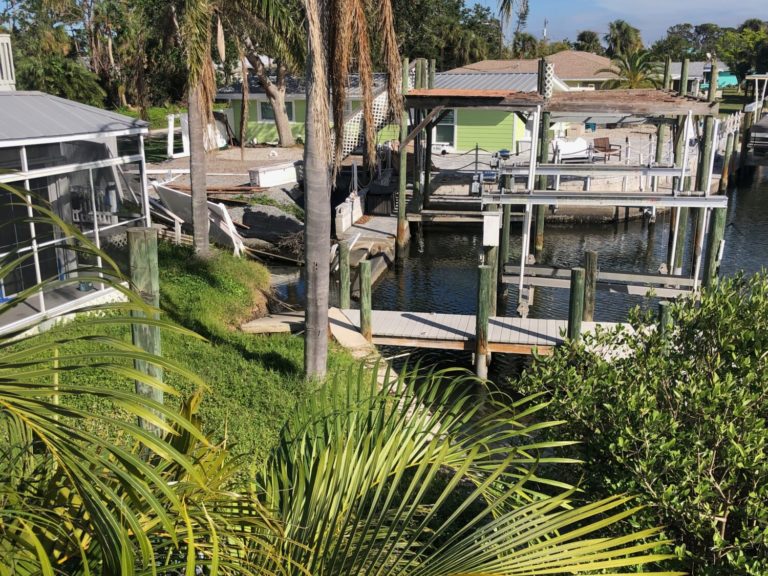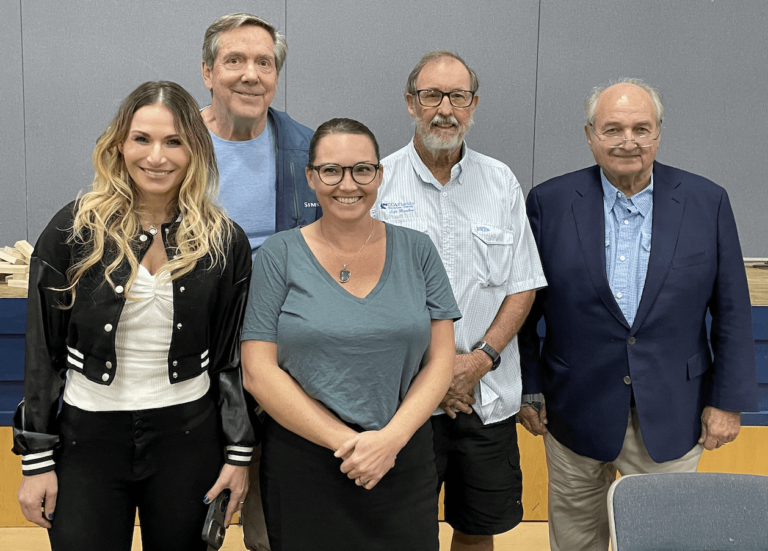“Never doubt that a small group of thoughtful, committed citizens can change the world. Indeed, it is the only thing that ever has.” – Margaret Mead, anthropologist (1901-1978)
In the 1890s, the first leg of the Gulf Intracoastal Waterway was created to transport produce from the Sarasota-Bradenton area to the Tampa Bay market. The project skirted two large mangrove islands called the Otter Keys and would generate the dredged-out dirt, or spoil, that would be the basis of the uplands we now call the Sister Keys.
At one point, a disgruntled owner bulldozed many of the mangroves because he wasn’t allowed to build on the islands. During World War II, the flats surrounding the islands were used by bombers for target practice, and craters still exist as deep blue holes on the grass flats. In the 1960s, the islands were owned by a group of investors that intended to create a tropical resort they dubbed Shangri Isles. The development would have transformed the keys with a marina, an 18-hole championship golf course, luxury homes, a hotel and an airport. Fortunately, economics dictated a different course for the islands and the plants and animals that call them home.
Over the next two decades, the islands remained essentially the same except that seeds and flotsam were brought to them by birds, wind and tides.
In the late ’80s, the islands went on sale again, this time advertised as a “tropical paradise” where 80 acres could be developed. This was during a period of regional growth when a spurt of development caused homes to sprout up on Tidy Island on the east shore of Sarasota Bay at the expense of the native habitat. An adjacent island, Jewfish Key, also was undergoing development and blue septic tanks that would be buried for future homes dotted the shore on platted lots.
This activity caused a group of citizens to ask the question, “Wouldn’t it be nice to have at least one island in the bay that didn’t have a house on it?” In 1989, those progressive citizens created the Sister Keys Conservancy and lobbied for two years to raise money and awareness to buy and protect the islands.
A logo was created, a jingle was composed and area environmental groups, including the Longboat Key Garden Club, Mote Marine Laboratory, The Sierra Club, The Trust for Public Lands and Florida Audubon, were enlisted to further the cause. The group lobbied politicians and organized fundraisers, a Music in the Park series, bake sales and speaking engagements to spread the word.
Despite all of their efforts, the money to purchase the islands seemed out of reach until the Town of Longboat Key voted to fund the purchase on July 10, 1992. In October of that year, the Sister Keys Conservancy’s co-founders traveled to Washington, D.C., where they were presented with the Theodore Roosevelt Conservation Award for their efforts.
The islands were protected with a covenant in the deed that requires any changes to the status of the islands (renewed for 20 years this year) to be sanctioned by Florida Audubon and for them to remain essentially unchanged until 2006. At that point, the town was approached by the developers of Perico Island, who needed mitigation credits for some dredging they were proposing. When the town leaders agreed, the islands were transformed by a project that removed all invasive plants, replaced them with native species and created an almost two-acre wetland.
In 2010, Sarasota Bay Watch adopted the Sister Keys and committed to helping keep the islands free of trash and the inevitable regrowth of invasive plants. Trash and invasive cleanups have been done every April since the completion of the mitigation with the help of the Longboat Key Public Works Department, Longboat Key residents, the Longboat Key Garden Club and Suncoast Waterkeeper, which now partners with these groups periodically as well as annually.
The Sister Keys of today are an extraordinary example of what can be done to protect and enhance the Sarasota Bay ecosystem and are a remarkable vision of the restorative power of nature.
To learn more about the Sister Keys, visit www.sisterkeys.org.



